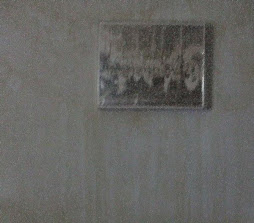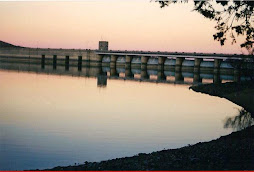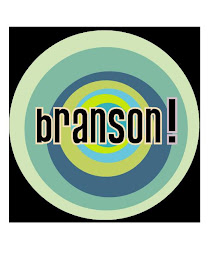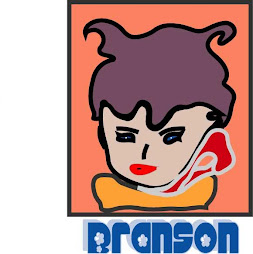Japan output logs record fall on quake, but seen rising Reuters. Excerpts:
TOKYO, April 28 (Reuters) - Japan's factory output fell at a record pace in March but manufacturers expect production to rise in coming months, a sign factories could bounce back earlier than expected as they repair supply chains following the earthquake and tsunami.
Still, capacity utilisation could remain low as companies try to save energy during an expected power supply crunch in the summer months, providing little comfort to firms abroad that rely on Japanese products.
"Heavily hit automakers are still only functioning at 50 percent of their capacity and curtailed production looks set to continue for a few more months, so it remains to be seen whether forecasts for April and May will actually be realised," said Mari Iwashita, chief market economist at SMBC Nikko Securities.
Japan economy reels from disaster impact From The Bangkok Post. Excerpts:
Japan's factory output posted a record tumble in March after a devastating earthquake and tsunami crippled supply chains and forced the nation's biggest companies to shutter plants, data showed Thursday.
In other data illustrating the emerging impact of the March 11 disasters on the world's third-biggest economy, household spending also fell by a record amount as cautious consumers held off on purchases of non-essential goods.
Many see Japan sliding into temporary recession after the disasters left around 26,000 dead or missing and devastated infrastructure and manufacturing facilities, plunging the nation into its worst crisis since World War II.
..
A 15.3 percent dive in Japan's industrial production in March on-month was the sharpest since records began in 1953, the government said Thursday.
The fall was worse than the previous record drop of 8.6 percent in February 2009..
..
Japan's biggest recorded quake and the tsunami it unleashed shattered supply chains and crippled electricity-generating facilities, including a nuclear power plant at the centre of an ongoing atomic emergency.
Many key component manufacturers are based in the worst-hit regions and suffered damage to their facilities..
..
While the government said it expected production to increase in April and May, analysts warned that Japan's output would continue to be compromised. "Delays in parts deliveries remain quite severe. The pace of production recovery is expected to be very slow until summer," said Murakami.
..
In separate data, Japanese household spending plunged by 8.5 percent in March from a year earlier in the biggest drop since records began in 1964.
..
Spending by wage-earning households tumbled by 11.0 percent following a 0.7 percent drop in February, also a record fall, the ministry said. (If I'm understanding correctly, February held the previous negative growth record of 0.7 percent. Then March happened..)
Fukushima radiation levels 15,000% higher than first reported Op-Ed News. Excerpts:
Japan has admitted that radiation levels from the damaged Fukushima Daiichi Nuclear Power Plant reactors are much higher than originally reported. It seems that someone "accidentally' put the decimal point in the wrong place (0.69 instead of 6.90).
..
We have been led to believe, by the authorities and mainstream media, that radiation levels in Japan were still within safety limits, although it was found necessary to increase the legal limits of radiation exposure to achieve this result.
Just a week ago we were informed that radiation levels detected by robots (in the damaged reactors) were between 49 and 57 millisieverts per hour. The limit of exposure for emergency workers in Japan is 250 millisieverts a year, which means they would exceed safety limits within just a few hours.
..
It is difficult to place too much trust in the authorities when they increase the legal limits of radiation exposure to suit themselves, or have much faith in the EPA when they withdraw many of their radiation monitors (in places like California, Oregon and Washington ), because the readings "seemed too high". Could it be because the radiation levels WERE too high?
Radioactive Strontium Found in Hilo, Hawaii Milk Forbes(!). Excerpts:
A radioactive isotope of strontium has been detected in American milk for the first time since Japan’s nuclear disaster—in a sample from Hilo, Hawaii—the Environmental Protection Agency revealed yesterday.
“We have completed our first strontium milk sample analysis and found trace amounts of strontium-89 in a milk sample from Hilo, Hawaii. The level was approximately 27,000 times below the Derived Intervention Level set by the U.S. Food and Drug Administration,” EPA said in a statement emailed to me yesterday afternoon. EPA posted the test result at epa.gov in a pdf.
EPA found 1.4 picoCuries per liter of strontium-89 in a milk sample collected in Hilo on April 4.
Although the EPA tests milk, the FDA regulates it, and the FDA’s Derived Intervention Level—the standard observed for food—is 4,400 pCi/L for strontium-90. I’m working to confirm whether FDA has a separate DIL for Sr-89.
The EPA’s Maximum Contamination Level for Sr-89 in drinking water is 20 pCi/L. (For more on the difference between EPA and FDA standards, see “Why Does FDA Tolerate More Radiation Than EPA?“)
Your answer to that question? From the article..
..FDA’s Derived Intervention Limits are not radioactive exposure limits. In the FDA’s own words:
The number itself is conservatively estimated, with children and the elderly and our most vulnerable citizens in mind—but in practice, the DIL is more a commercial level than an exposure-safety level: DILs are recognized internationally as the level above which foods are unfit for sale or trade.
The EPA’s MCL Goal, by contrast, is “the level of a contaminant in drinking water below which there is no known or expected risk to health.”
And:
EPA’s mandate is to protect public health while avoiding a “significant economic impact” to industry. If EPA finds high levels of radionuclides in a municipal drinking water system, the water can be cleaned relatively cheaply. Depending on the specific contaminant, the water can be treated with reverse osmosis, activated carbon, ion exchange, or better: all three.
If FDA finds high levels of radionuclides in milk, that milk can’t go to market. That cow can’t be implemented with a treatment system. And that dairy farmer faces a significant economic impact.
So the FDA observes a much more tolerant standard, and the impact is transferred to those theoretical two people in 10,ooo.
Fukushima Nuclear Accident Update Log From the IAEA.
Reactor Flooding Effort Proceeds at Japan Reactor Global Security Newswire, via Rense. Excerpts:
The operator of Japan's Fukushima Daiichi nuclear power plant was set on Wednesday to more than double insertion of water into the facility's No. 1 reactor as a step toward determining whether to fully flood the ailing system, the Mainichi Daily News reported.
Tokyo Electric Power has already started pumping additional water into the reactor's outer containment vessel, Reuters reported on Tuesday. The company was expected on Monday to investigate whether water was escaping through a suspected rupture in the containment vessel, according to an earlier report. The firm said it would use cement to patch ruptures in the No. 2 reactor containment vessel and potential additional compromised containers to prevent liquid from escaping.
The plant operator intends to completely flood the containment vessels of multiple plant reactors in a process referred to as "water entombment." The firm ultimately aims to achieve the cold shutdown of all reactors at the facility, minimizing the likelihood of significant radioactive contaminant releases..
TOKYO, April 28 (Reuters) - Japan's factory output fell at a record pace in March but manufacturers expect production to rise in coming months, a sign factories could bounce back earlier than expected as they repair supply chains following the earthquake and tsunami.
Still, capacity utilisation could remain low as companies try to save energy during an expected power supply crunch in the summer months, providing little comfort to firms abroad that rely on Japanese products.
"Heavily hit automakers are still only functioning at 50 percent of their capacity and curtailed production looks set to continue for a few more months, so it remains to be seen whether forecasts for April and May will actually be realised," said Mari Iwashita, chief market economist at SMBC Nikko Securities.
Japan economy reels from disaster impact From The Bangkok Post. Excerpts:
Japan's factory output posted a record tumble in March after a devastating earthquake and tsunami crippled supply chains and forced the nation's biggest companies to shutter plants, data showed Thursday.
In other data illustrating the emerging impact of the March 11 disasters on the world's third-biggest economy, household spending also fell by a record amount as cautious consumers held off on purchases of non-essential goods.
Many see Japan sliding into temporary recession after the disasters left around 26,000 dead or missing and devastated infrastructure and manufacturing facilities, plunging the nation into its worst crisis since World War II.
..
A 15.3 percent dive in Japan's industrial production in March on-month was the sharpest since records began in 1953, the government said Thursday.
The fall was worse than the previous record drop of 8.6 percent in February 2009..
..
Japan's biggest recorded quake and the tsunami it unleashed shattered supply chains and crippled electricity-generating facilities, including a nuclear power plant at the centre of an ongoing atomic emergency.
Many key component manufacturers are based in the worst-hit regions and suffered damage to their facilities..
..
While the government said it expected production to increase in April and May, analysts warned that Japan's output would continue to be compromised. "Delays in parts deliveries remain quite severe. The pace of production recovery is expected to be very slow until summer," said Murakami.
..
In separate data, Japanese household spending plunged by 8.5 percent in March from a year earlier in the biggest drop since records began in 1964.
..
Spending by wage-earning households tumbled by 11.0 percent following a 0.7 percent drop in February, also a record fall, the ministry said. (If I'm understanding correctly, February held the previous negative growth record of 0.7 percent. Then March happened..)
Fukushima radiation levels 15,000% higher than first reported Op-Ed News. Excerpts:
Japan has admitted that radiation levels from the damaged Fukushima Daiichi Nuclear Power Plant reactors are much higher than originally reported. It seems that someone "accidentally' put the decimal point in the wrong place (0.69 instead of 6.90).
..
We have been led to believe, by the authorities and mainstream media, that radiation levels in Japan were still within safety limits, although it was found necessary to increase the legal limits of radiation exposure to achieve this result.
Just a week ago we were informed that radiation levels detected by robots (in the damaged reactors) were between 49 and 57 millisieverts per hour. The limit of exposure for emergency workers in Japan is 250 millisieverts a year, which means they would exceed safety limits within just a few hours.
..
It is difficult to place too much trust in the authorities when they increase the legal limits of radiation exposure to suit themselves, or have much faith in the EPA when they withdraw many of their radiation monitors (in places like California, Oregon and Washington ), because the readings "seemed too high". Could it be because the radiation levels WERE too high?
Radioactive Strontium Found in Hilo, Hawaii Milk Forbes(!). Excerpts:
A radioactive isotope of strontium has been detected in American milk for the first time since Japan’s nuclear disaster—in a sample from Hilo, Hawaii—the Environmental Protection Agency revealed yesterday.
“We have completed our first strontium milk sample analysis and found trace amounts of strontium-89 in a milk sample from Hilo, Hawaii. The level was approximately 27,000 times below the Derived Intervention Level set by the U.S. Food and Drug Administration,” EPA said in a statement emailed to me yesterday afternoon. EPA posted the test result at epa.gov in a pdf.
EPA found 1.4 picoCuries per liter of strontium-89 in a milk sample collected in Hilo on April 4.
Although the EPA tests milk, the FDA regulates it, and the FDA’s Derived Intervention Level—the standard observed for food—is 4,400 pCi/L for strontium-90. I’m working to confirm whether FDA has a separate DIL for Sr-89.
The EPA’s Maximum Contamination Level for Sr-89 in drinking water is 20 pCi/L. (For more on the difference between EPA and FDA standards, see “Why Does FDA Tolerate More Radiation Than EPA?“)
Your answer to that question? From the article..
..FDA’s Derived Intervention Limits are not radioactive exposure limits. In the FDA’s own words:
FDA has set Derived Intervention Levels for foods prepared for consumption. These levels do not define a safe or unsafe level of exposure, but instead a level at which protective measures would be recommended to ensure that no one receives a significant dose.In other words, the FDA’s DIL is set at the point at which a single liter of milk is so radioactive, you should take protective action. (Do you get that? What if you drink more than one liter?)
via FDA Public Health Focus > Radiation Safety.
The number itself is conservatively estimated, with children and the elderly and our most vulnerable citizens in mind—but in practice, the DIL is more a commercial level than an exposure-safety level: DILs are recognized internationally as the level above which foods are unfit for sale or trade.
The EPA’s MCL Goal, by contrast, is “the level of a contaminant in drinking water below which there is no known or expected risk to health.”
And:
EPA’s mandate is to protect public health while avoiding a “significant economic impact” to industry. If EPA finds high levels of radionuclides in a municipal drinking water system, the water can be cleaned relatively cheaply. Depending on the specific contaminant, the water can be treated with reverse osmosis, activated carbon, ion exchange, or better: all three.
If FDA finds high levels of radionuclides in milk, that milk can’t go to market. That cow can’t be implemented with a treatment system. And that dairy farmer faces a significant economic impact.
So the FDA observes a much more tolerant standard, and the impact is transferred to those theoretical two people in 10,ooo.
Fukushima Nuclear Accident Update Log From the IAEA.
Reactor Flooding Effort Proceeds at Japan Reactor Global Security Newswire, via Rense. Excerpts:
The operator of Japan's Fukushima Daiichi nuclear power plant was set on Wednesday to more than double insertion of water into the facility's No. 1 reactor as a step toward determining whether to fully flood the ailing system, the Mainichi Daily News reported.
Tokyo Electric Power has already started pumping additional water into the reactor's outer containment vessel, Reuters reported on Tuesday. The company was expected on Monday to investigate whether water was escaping through a suspected rupture in the containment vessel, according to an earlier report. The firm said it would use cement to patch ruptures in the No. 2 reactor containment vessel and potential additional compromised containers to prevent liquid from escaping.
The plant operator intends to completely flood the containment vessels of multiple plant reactors in a process referred to as "water entombment." The firm ultimately aims to achieve the cold shutdown of all reactors at the facility, minimizing the likelihood of significant radioactive contaminant releases..









































































































No comments:
Post a Comment